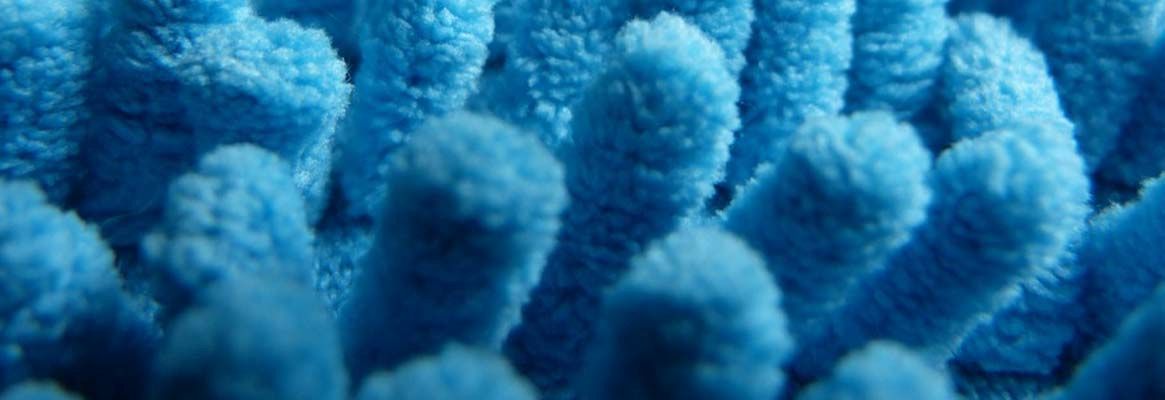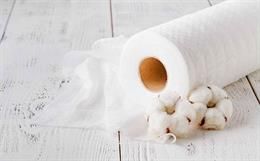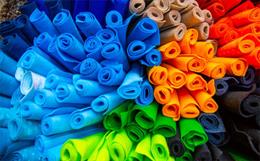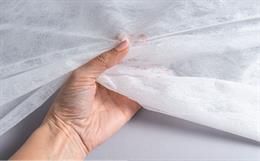Nonwovens industry manufacturesand converts versatile and engineered fibrous assemblies with numerous existingapplications and continuously innovating products to find new applications.Nonwovens can be classified in more than one way: on time scale, by employedtechnology or by the area of application. Disposable to durable nonwovensproducts can be placed on a time scale with few products perishing afterseconds (wipes) to some products with a lifespan of decades (geotextiles). Theclassification on the basis of employed technology can be challenging asnumerous combinations of raw materials, web formation, web bonding andfinishing treatments lead to nonwoven products for a myriad of applicationareas.
Essentially, this degree offreedom is the key to engineer nonwovens with unique properties to cater a widerange of application areas. The application areas of nonwoven fabrics includefollowing segments: hygiene, wipes, apparel, medical, healthcare, personalcare, automotive, electronics, filtration, agriculture, horticulture,furnishings, construction, and packaging. EDANA identified hygiene (31.8%),construction (18.5%), wipes (15.4%) and filtration (4.0%) as the key segmentswith market share in roll goods products.
These segments can be further classified,for example in to air, gas and liquid filtration for the filtration segment. Itis important to mention that a single product in an application area can bemanufactured by employing different technologies. The examples of use for keyapplication areas are given in the table below. Spun bonding is a major portionof nonwovens industry with polypropylene being the largest employed fibre, andhygiene being the major application area.
| Applications | Examples of Use | Technologies Employed |
| Absorbent hygiene products (AHP). | Baby diapers, feminine hygiene products and adult incontinence products | Airlaid, Carded nonwovens, Spunmelt (SMS, Spunbond) |
| Agriculture and Horticulture | Crop covers, Plant protection Seed blankets, Weed control fabrics, Greenhouse shading, Root control bags, Biodegradable plant pots, Capillary matting, Landscape fabric | Needlepunched, Spunbond |
| Automotive | Headliner, Dashboard insulation, Carpets and flooring, Seats, Interior trim, Cabin air filters, Airbags, Wheel housing, Dashboard insulation, Hood insulation, Filtration, Moulded bonnet liners, Heat shields, Parcel shelf, Boot liners, Boot floor covering, Boot carpets | Needlepunched, Spunlace, Thermally bonded, Spunbond |
| Building | Insulation (thermal and noise), House wrap, Roofing, Covers for acoustic ceilings, Air infiltration barrier, Vapour barrier, Flooring substrates, Facings for plaster board, Pipe wrap, Concrete moulding layers, Foundations and ground stabilisation, Vertical drainage | Drylaid, Needlepunched, Spunlace, Thermobonded, Spunmelt |
| Geotextiles | Road and rail building, Dam, canal and pond lining, Hydraulic works, Sewer lines, Soil stabilisation and reinforcement, Soil separation, Drainage Landfill, Filtration, Sedimentation and Erosion control, Weed control, Root barriers, Sport surfaces, Asphalt overlay, Impregnation base, Drainage channel liners | Drylaid, Needlepunched, Spunlaid |
|
Filtration |
Engine Air, Oil, Fuel, Cabin Air, HVAC - industrial heating, ventilation and air conditioning, Industrial Consumer Products, Clean Rooms, Food & Beverage, Pharmaceutical/Medical, Water, Blood, Hydraulic, Antimicrobial, Biopharmaceutical, Dust, Odour |
Airlaid, Electrospun, Meltblown, Needlepunched, Spunbond, Spunlace, Thermobonded, Wetlaid |
|
Household |
Abrasives, Bed linen, Blinds/curtains, Carpet/carpet backings, Covering & separation material, Detergent pouches/Fabric softener sheets, Flooring, Furniture/Upholstery, Mops, Table linen, Tea and coffee bags, Vacuum cleaning bags, Wall-covering, Wipes |
Needlepunched, Spunbond, Wetlaid |
|
Medical |
Disposable caps, gowns, masks, scrub suits and shoe covers, Drapes, wraps and packs, Sponges, dressings and wipes, Bed linen, Contamination control gowns, Examination gowns, Lab coats, Isolation gowns, Transdermal drug delivery, Shrouds, Underpads, Procedure packs, Heat packs, Ostomy bag liners, Fixation tapes, Incubator mattress, Sterilisation wraps, Wound care, Cold/heat packs, Drug delivery |
Drylaid, Spunlace, Meltblown, Spunbond |
|
Personal Care Wipes |
Baby wipes, Facial wipes, Cleansing wipes, Hand & body wipes, Moist towelettes, Personal Hygiene wipes, Feminine Hygiene wipes, Antibacterial wipes, Medicated wipes |
Airlaid, Spunlace, Wetlaid |
The nonwovens industry can be divided into manufacturers and converters or in some cases organizations do both. A manufacturer could be producing a single product which could be converted into products for different application areas or might be producing variants of a product suited to required end use. For example, a hydroentangled cotton roll good producer could be converted in to a baby wipe, a diaper sheet or surgical gown.
Generally, companies are specialised in certain application areas because nonwovens industry is capital intensive requiring investments in technology, research & development, and skilled workforce. High production speeds, lesser workforce and innovation are important factors for a profitable operation. With the exception of few specialist/niche areas, nonwoven industry is pulled by the consumer market. Research & development work in a certain application area requires scientific personnel, characterization & testing equipment and technological facilities to develop innovative products for existing and new application areas.
Each application area requires its own demands. One technology might be able to manufacture nonwoven products for a wide range of applications but qualified team of researchers, investments in characterization & testing equipment, marketing and sales department are required to make it a success. Hence, companies tend to target limited end products with larger volumes to be a specialist in certain application areas.
Moreover, nonwoven production and conversion lines are designed after market and feasibility studies and satisfy the identified need. For different application areas, changes in the production and conversion sequence will be unavoidable and would affect productivity as well as material and resources wastages leading to higher cost of production. In some cases, technology also puts a barrier to enterprise in certain application areas. For example, low basis weight and high production speeds of spunbond lines cost effective solution for products like diaper cover stock.
On the other hand, for applications such as roofing carrier fabrics, needlepunching and chemical-bonding technology is the answer. Therefore, technical and financial feasibility restricts companies to work in certain application areas and companies reverse engineer the needs of consumers by setting up production and conversion capabilities. The exceptions to application based approach are niche and high-end areas. In specialised products, the innovation and technology is the key. Such products generally do not require mass production and end user is generally not the decision maker but a professional decides and these products develop their own need for a certain application.
The markets, near maturing or offering very low growth rate, for certain products may not fit in the application based approach of nonwovens industry. An example can be the baby diapers with very low growth rate in developed countries. Another exception could be a proactive approach to be sustainable before the governments enforce a regulatory measure. For example, disposable nonwovens are indispensable in the developed countries but growing awareness on sustainability lead to development of a voluntary code for nonwovens industry by EDANA and INDA to develop flushable products which would disintegrate in wastewater stream.
Observing global trends, owing to the need of the domestic market, disposable nonwoven applications is the major chunk in developed countries with higher personal incomes, while durable nonwoven applications dominate in the developing countries due to growth in infrastructure development. For emerging markets, durable nonwovens for construction are the key to invest. Infrastructure is an indirect yardstick to measure prosperity of a country. The development leads to enhanced consumer purchasing power and potentially paves way for the disposable applications.
Globally, the nonwovens industry is innovating to reduce mass of products especially disposables as they pose a concern towards solid waste management, add functionality to existing products for enhanced consumer experience and prepare products from eco-friendly and recycled materials without comprise on performance. The innovation also revolves around an application-based approach because there is no universal solution to all application segments. The nonwovens industry is expanding in developing economies but the competitive edge of nonwovens industry in terms of lower human resource input is likely to inhibit a complete industry shift to developing economies as happened in the case of conventional textile industry when cost of production hiked in developed countries.
Nonwovens, mostly being functional fabrics, are being recognized as key products to enhance well-being of humans and their surroundings. "Nonwovens" word describes what these fabrics are not and what these fabrics actually are is not easy to demonstrate because of their unique structure which is generally presented by statistical averages of certain parameters. Nonwovens are "not-known" to end user and there is a need to bring mass awareness to consumers about these engineered products.
The awareness would help to decrease the gap between producers, converters and consumers would help in discovering new applications and strengthening of existing application areas. To summarise, nonwovens find numerous application in a wide range of segments and can be prepared by a variety of combinations of materials and process variables. It is a capital intensive industry and with the exception of niche areas, the consumer demand dictates the need of products. The economies of scale and competitive nature of the market favours the application based approach of industry to specialise in certain application areas.
About the Author:
The author works as an Assistant Professor, Centre for Advancement of Textile Engineering and Technology, University of Engineering & Technology, Lahore (Faisalabad Campus), Pakistan.







